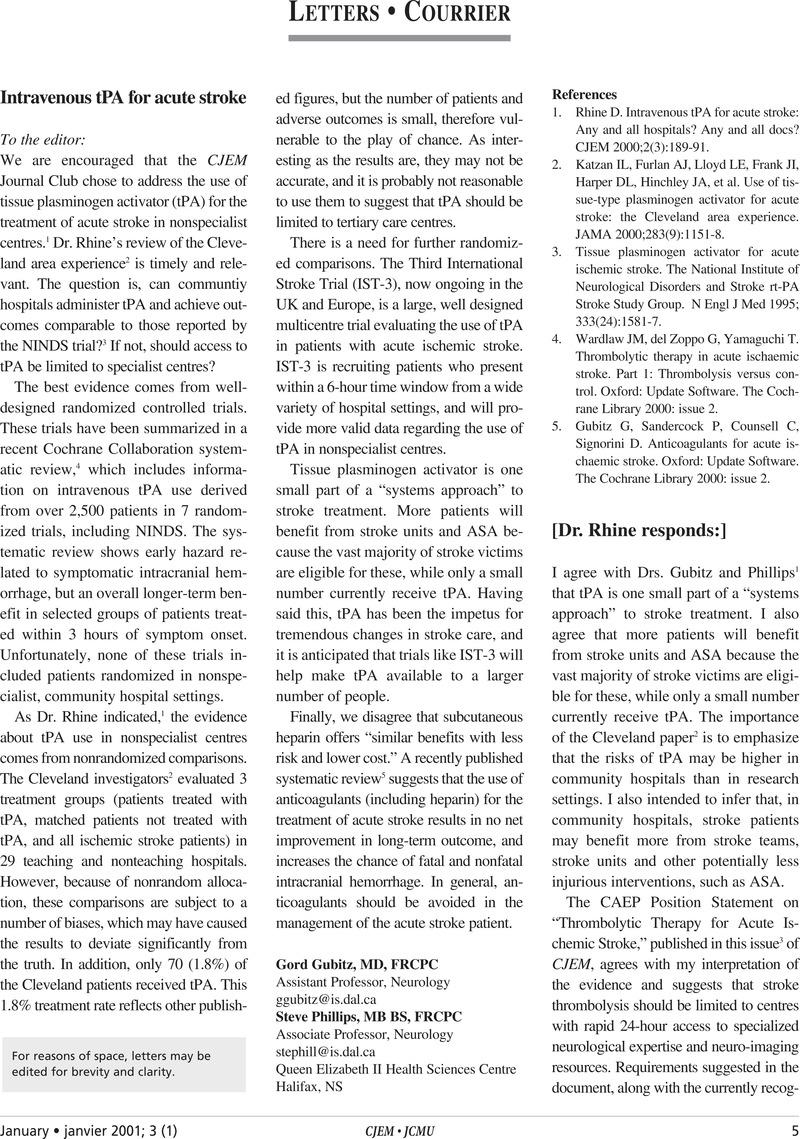No CrossRef data available.
Article contents
[Dr. Rhine responds:]
Published online by Cambridge University Press: 21 May 2015
Abstract
An abstract is not available for this content so a preview has been provided. As you have access to this content, a full PDF is available via the ‘Save PDF’ action button.

- Type
- Letters • Courrier
- Information
- Copyright
- Copyright © Canadian Association of Emergency Physicians 2001
References
1.Gubitz, G, Phillips, S.Intravenous tPA for acute stroke [letter]. CJEM 2001;3(1):5.CrossRefGoogle Scholar
2.Rhine, D.Intravenous tPA for acute stroke: Any and all hospitals? Any and all strokes? CJEM 2000;2(3):189–91.CrossRefGoogle Scholar
3.Canadian Association of Emergency Physicians Committee on Thrombolytic Therapy for Actue Ischemic Stroke. Thrombolytic therapy for acute ischemic stroke [position statement]. CJEM 2001; 3(1):8–12.CrossRefGoogle Scholar
4.Kay, R, Wong, KS, Yu, YL, Chan, YW, Tsoi, TH, Ahuja, AT, et al. Low-molecular-weight heparin for the treatment of acute ischemic stroke. N Engl J Med 1995;333:1588–93.CrossRefGoogle ScholarPubMed
5.Counsell, C, Sandercock, P.Low-molecular-weight heparins or heparinoids versus standard unfractionated heparin for acute ischaemic stroke. Cochrane Database of Systematic Reviews 2000;2:CD000119.Google Scholar




